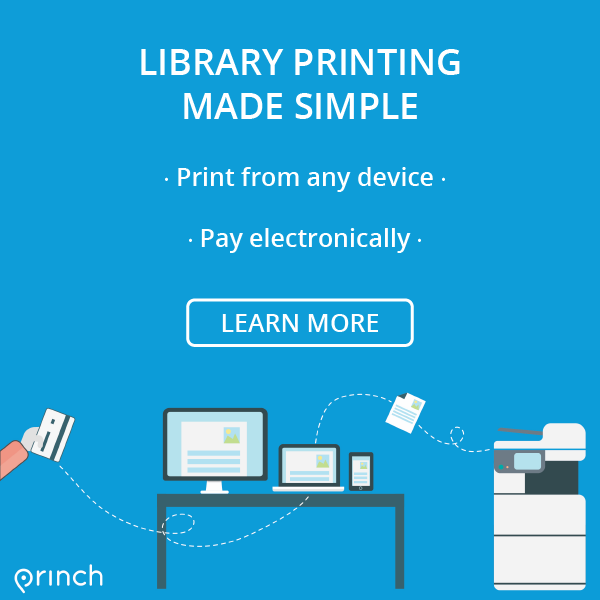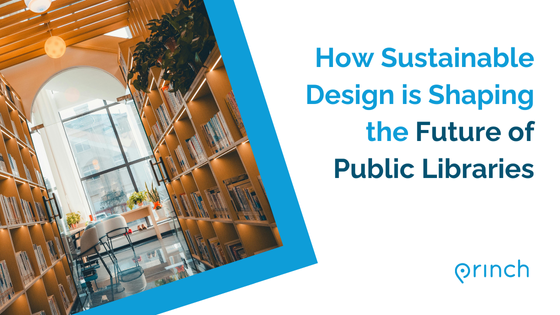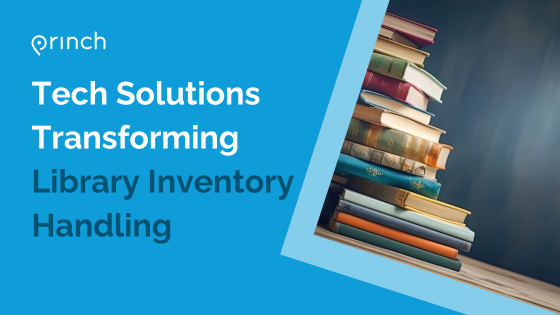Listen in your favourite player
We hear about libraries that are “innovative”, but what does that really mean? What is library innovation? What makes a library innovative? Can one characteristic or initiative make a library innovative?
To find the answers to these questions, tune in to episode four of the Princh Library Lounge! In this episode our host, Marc Lapointe, is joined by Maxine Bleiweis and Bill Derry, two experts in library innovation.
Nowadays we hear a lot about library innovation and libraries being “innovative”. But what does the term “innovation” mean to our guests?
Maxine starts the conversation by stating that, in her opinion, it means being open. Open to new ideas that have the potential to become trends, both inside and outside of the library world. One must look at ideas and ask; Where is the library in this? and based on the answer, implement those new ideas. Maxine adds that innovation really begins by having staff who are open to new ideas.
Bill reminiscences about the time he worked with Maxine in Westport Library. According to him, staff were encouraged to scout for new ideas in different industries (schools, coffee shops, etc.) and later try those ideas in the library. He adds that in his opinion, being innovative means staying fresh and relevant via scouting for new ideas.
Maxine dives deeper into the topic of staffing; she states that even if you have the right staff, barriers to innovation can still manifest from different sources; e.g. restrictive job descriptions and service screens preventing interaction with the visitors who enter the library.
The right mentality among the staff is crucial for a library to be innovative. However, how important it is for such an institution to be innovative in technology, staffing or procedures?
Maxine answers the questions by stating that libraries cannot become stagnant, they absolutely always have to be relevant, as they are not just a nostalgic place of the past. Libraries exist for their communities, and as such, it is their duty to guide the people in those communities through an ever-changing landscape. She also states that libraries are a neutral and safe place, the perfect environment in which to take risks.
Bill agrees with Maxine, adding that libraries are places that have their communities’ success in mind. He also states that as libraries are for all ages, new ideas are important because they attract people from different age groups and different backgrounds, which creates an opportunity for the library to provide an “intergenerational experience”. He further elaborates by saying that new products provide visitors with a sense of awe, by allowing them to touch the future and see what is to come.
Maxine adds that her innovation projects had one essential goal in mind; to make everybody feel like they were a library person. This is done by ensuring everyone can relate to something happening there.
How can a library that is already in an innovative mindset support innovation? What are the first steps they can take in this process?
Bill states, as libraries are an open system, it would be natural for them to start from their area of expertise; the outside. In what ways does the building invite people in? What is it that visitors first see as they enter the library? Where can they go to learn, think or meet people? He also adds, that inviting like-minded people to the library is one of the best practices to develop participatory activities.
Another key point, according to Bill, is in accepting failure will happen. The staff need to be encouraged to try new and different things which, in fact, may fail, and no one should be punished for those failures.
Maxine elaborates that while failure is a key component of innovation, it requires the right staff. She advises library directors to always be in, what she calls, “recruitment mode”; always look for people you want to work with, especially for people from other industries. She also encourages the use of fluid and flexible job titles, so things like seniority will not dictate how you do things in the library. She urges libraries to build a work culture where trying new things is encouraged, without it feeling like a forced expectation.
Find out more about how a library can support innovation by listening to episode four of the Princh Library Lounge!
How did the staff react to these hiring tools, knowing that their voice would be empowered and recognized?
Maxine says that everyone knew, during the interview process, what they were getting into, that no matter what their position is, they will have a say in the life of the library. All staff members shared their skills and knowledge with each other, even if it was not something library specific, and did their best to come up with a method to make it work in a library setting.
Bill says that this innovation process creates a culture where disruption is the norm, and that is not something everyone strives for. However, once people got comfortable with the idea that they are the ones creating something new, they are the ones on the forefront, even those who did not participate as much before started to take on leadership roles.
Does library innovation always have to be technology related?
Bill says that the answer is yes and no. Bill states, that innovation is more of a mindset than a set of tools. Bill explains working with thread and needles, cardboard, adding moveable walls and other items such as this may or may not require technology, but can still change and expand your library’s culture. He reminisces about one of his first maker project experiences, where staff and visitors banded together to build two airplanes “flying” through the great hall of their library, based on the ideas by one of the library’s patrons who was an architect. That was a good example of a successful project with low—to no—tech resulting in innovation and redesign.
Maxine adds that looking at the people in your community as your resources is important also, you can create some amazing results with communicating with your community. She further elaborates, saying that in this world where we are surrounded by technology, we all need low-tech to no-tech spaces where we can recharge our batteries, allowing us to stop, listen and wonder.
If you have any questions about this topic that you would like to discuss with our guests, you can reach them here:
Maxine: @maxinebleiweis on Twitter and LinkedIn or by email at maxine@maxinebleiweis.com
Bill: billderry@gmail.com or @BillDerry on Twitter and LinkedIn
Subscribe to the blog and receive news from libraries around the world














